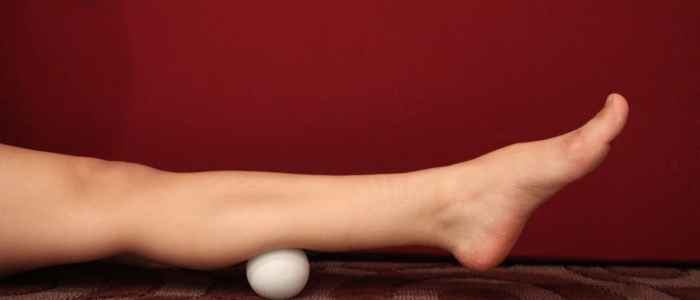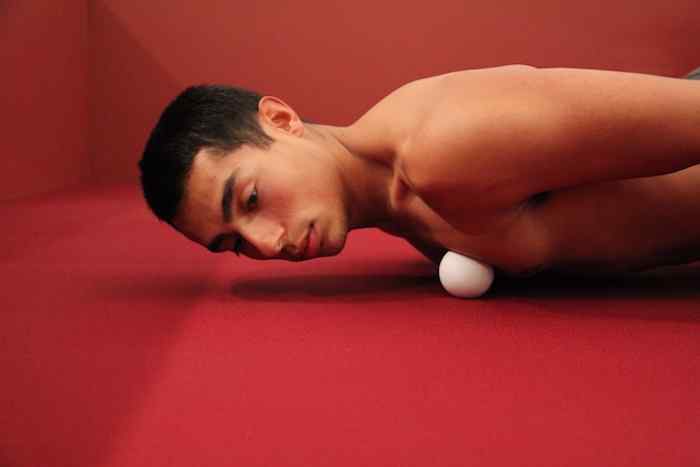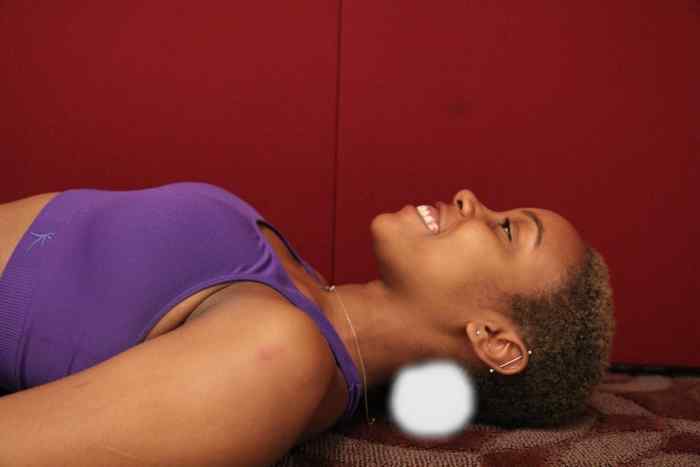Enhancing Performance: Self-Care for All Artists
As physical and energetic creatures, artists spend endless hours training their minds and musculature into optimally functioning, art-making instruments. But just as one must change a car’s oil, lubricate bicycle chains and snake clogs out of a drain, bodies, as instruments, need the same kind of maintenance. Remembering to take the time to pause, and unblock the knots and energy that are congealing within muscles and joints ensures that they operate at full capacity.
Artist’s bodies go through endless hours of training and creation, often without the benefit of proper stretching or hydration, which can cause adhesions. When connective tissue called fascia, adheres to muscles, bones, and to itself, range of motion becomes limited and thereby so does energy flow. On a purely physical level, as flexibility declines, there is a hazard of soreness and injury. Seldom due to big impact, these injuries are commonly overuse injuries caused by repeating tasks without balancing strengthening with stretching.
Daily dance class, rehearsal, hours of practice on any instrument, drawing, painting, working at a keyboard, or simply sitting in poor alignment, all build up muscular tightness that impedes the flow of blood, lymph, and energy. Carpal tunnel, tight neck and upper back muscles, eyestrain, lower back pain, headaches, and constipation can all be attributed to a lack of physical and energetic flow. When muscles bind together, peak performance cannot be reached because it takes more energy to generate less movement. When they work independently, doing only their intended job, the whole being experiences optimum function and flexibility. This simultaneously enables energy to cascade, unimpeded throughout the body. What artist does not want to experience that? This is precisely why self-care is not a luxury; it is routine maintenance.
With limited time and/or financial resources, artists are likely to put off self-care such as therapeutic massage. Yet, there are widely available self-care tools to help artists perform daily upkeep. Basic myofascial release consists of applying heat and pressure to connective tissue in order to decrease adhesions and restore muscles’ independent action. Enter the gateway to newfound physical and energetic efficiency. “Because myofascial release is noninvasive and safe with virtually no side effects, it comes with a record of very good results. Performance of any sport or task has the potential to improve significantly with myofascial release.” (Wolters Kluwer)
Self-Care Activities for Artists

To understand the magic that is myofascial release, one need only try a simple experiment:
- First thing in the morning, bend over.
- Assess flexibility.
- Sit down and roll each foot for 2 minutes on a lacrosse ball (this tool is harder than a tennis ball, less likely to break down, inexpensive, and ultimately portable).
- Apply a fair but not painful amount of pressure.
- Stand up.
- Bend over.
- Re-assess flexibility.
Chances are quite good that with only a few minutes of attention, flexibility and flow begin to increase. Releasing this connected matrix of tissue creates a chain reaction, decreasing tightness throughout the entire posterior side of the body. Convenience is key when it comes to these quick self-care rituals. Keeping a lacrosse ball beneath one’s desk or in one’s bag insures easy access to this art-improving tool.
Working further up the fascial chain by sitting on the floor with one’s calves resting on lacrosse balls increases the release and possibly creates momentary discomfort while discovering preciously unrecognized tightness. Since the calf muscle is a “two-headed” muscle, for an even more intense release, slowly rock and roll the calves, allowing the firmness of the ball to penetrate the space between the two sides of each calf. This action will unglue any adhesions sticking the two heads together. Not only will this help alleviate tension in the posterior fascia; it also decreases any unnecessary tugging on the achilles tendon caused by calf tightness.

Paying attention to the chest muscles also yields profound benefits. Many daily activities (or inactivities) create kyphotic, hunched posture. Texting draws the head and shoulders forward, as do multiple hours working at a computer. Any curiosity or doubt about that can be resolved by setting a timer each hour to do a “posture check.” In proper alignment, the ear lobe should line up with the center of the shoulder, center of the rib cage, and center of the hip. Frequently, ear lobes migrate forward as do shoulders causing a C-curve in the torso that places undue pressure on the neck and spine while increasing tension and trigger points in the chest muscle, pectoralis major, and overstretching the muscles of the upper back.
“Pectoralis major is a muscle which is often chronically tight. This becomes a reinforcing factor in the pain felt between the shoulder-blades and in the upper back and shoulder area.” (Poulsen) To release trigger points and unrealized tension within the chest:
- Place a lacrosse ball in the space between the collarbone and chest.
- Gently lean into it, pressing and rolling the ball though the muscles from sternum to armpit.
Done either one side at a time while standing, or lying down on two lacrosse balls simultaneously, this release technique can improve both posture and breathing. Imagine the benefits artists might experience from opening up the energy flow throughout the heart and lungs; Unrestricted flow coupled with diminished discomfort encourage limitless creativity.

Ready for another test?
- Close your eyes
- Place four fingers at the boney juncture between the spine and neck and press in gently. This occipital ridge includes several small muscles who are hard-wired into the eyes.
- Open your eyes
- Holding the head still, moving only the eyes, look to the right and left several times
- Observe the subtle movement of the muscles beneath your fingers
This simple exercise makes clear that the instant an alarm goes off in the morning, the suboccipital muscles begin working. They continue working until the moment the lights go out at night. Staring all day at a computer only intensifies their workload and tension. Three creativity-killing conditions: headaches, eye-strain, and fatigue are frequently the by-product. Utilizing the next self-care technique serves as a muscular release for these stressed muscles while simultaneously providing a myriad of other benefits.
If one begins the day with foot-rolling, ending it at the opposite end of the body provides a well-rounded self-care protocol. * Placing two lacrosse balls into a tube sock and tying the end into a knot creates a tool used to induce a “still-point.” Lying down, placing the balls at the back of the head in line with the ears, and setting a timer for ten to twenty minutes encourages the cerebrospinal fluid to slow its flow.
The delicate interruption of fluid flow causes a momentary buildup of fluid in the system. When the tissues are subsequently released and the fluid begins to flow again, it gently “flushes” the system, causing the membranes to stretch a bit and release tissue restrictions or adhesions.
The results, which also include increased blood flow to the brain, can have a therapeutic effect on the central nervous system and the entire body. Some other highly beneficial effects include headache and muscle pain relief, a reduced state of stress and ready response, a deep state of relaxation, and a general sense of well-being.”(Upledger)
Rather than looking at massage as a treat, respecting it as integral to training, the perfect tool for realigning and re-energizing artists’ instruments, increases one’s potential for growth. Creating a self-care routine encourages open-hearted, clear-headed, pain-less creation. It is time to place more value on balancing training with release to better equip artists of all disciplines for long and arduous task or making art speak.
*Do not try this technique if you have internal bleeding in the head, risk for stroke, head injuries and/or brain stem tumors.
Works Cited
Poulsen, Pia, Massaging Pectoralis Major, Importance and Benefits, Massage and Wellness, 13 January 2010.
Jon Upledger DO OMM , The Still Point, Massage Today, Nov. Vol 4. Issue 1, 2004 .
Wolters Kluwer Health, Principles of Manual Sports Medicine, Philadelphia, 2 June 2017.
What do you think? Leave a comment.











When I take the time to make art. I love how it provides me with an activity that really encourages me to slow down, be present in the moment, and appreciate the beauty around me.
Thank you for your comment. Cheers to the present!
I have seen first hand how level of self-care impacts creativity and freedom of expression.
That makes me smile. Stay loose, create more!
Self-care is definitely the path to creative expression.
Nicely done my friend! Before I even read the article I wondered if any of this would help regular non artistic persons (you know old ladies like me.) After reading all these ideas seemed like they would work on my aches, pains and tight muscles, as well. Maybe a side note in the title that this self care works for artists and others!! Keep up the great work! You’re doing a great job!
Absolutely! Thank you for reading. Making the world a better place, one loose chest at a time.
I feel like I should be doing this on a daily basis. Great read!
Yea! Please give it a try, I hope it makes you feel amazing!
As therapists and counselors, we often talk about the importance of self-care but don’t always do a great job of actually prioritizing it.
Amen! Now, if you’ll excuse me, I need to go roll my calves 😉
Thank you for raising awareness of self-care techniques.
Thank you for reading.
The courage to create brings many challenges!
Indeed, I hope this helps empower you to face them head-on with flowing energy!
A fascinating article and you’ve made me rethink some of my exercise routines. Definitely food for thought.
Wonderful! Thank you for reading… and thinking!
I teach injury prevention, yoga, and health classes at calarts. Many of the suggestions here are what I do in my classes. Would you like to come and be a guest?
It would be my pleasure! Please contact me via email and let’s set something up. Thank you for your interest and response. [email protected]
Great article. I want to live a long life and be in the physical and mental shape to continue to create for as long as possible.
Three cheers for that! All the best, Lisa
It’s only when I’m well — physically, mentally, emotionally and spiritually — that I’m a clear channel for my creative gifts.
Yes, Let’s all keep those channels open and let it flow through us!
Cheers for the read.
Thank you!
A different perspective on an often overlooked topic!
Thank you for reading!
Just making time for art can be excellent self care.
Indeed! Keep making time!
We can all learn to take care of ourselves better and be creative about it.
I was happy when I saw the title of this article because I truly believe in the importance of exercise, strength, and flexibility not only for maintaining health, but also to stimulate creativity. I think many people operate under the idea that the mind and body are separate and require different stimulants and exercises to stay strong and expand, but as we know everything is inextricably connected. I always have a rush of ideas and perplexing thoughts after finishing a yoga sequence, which I suggest everyone try to do daily. It’s not only good for your body, but in an attempt to clear my mind I find I am opening pathways for new thoughts and allowing my brain to explore new places and ideas. I find running to be a similar therapy, clearing the brain of everyday stresses to make room for revelations and sparks of creative thinking. I typically find myself drawn to my journal after such exercises to allow those thoughts to flow freely on paper.
Thanks for sharing your tips on how to stimulate your body and mind.
Thank you for reading! Cheers to making art!
Incredible read, good advice!
Thank you!
I’m delighted to read your response! Indeed, I too feel much more creative after physical activity. Thank you for reading!
These are very helpful, clear instructions.
Thank you for reading and I’m glad to help!
I was not aware of the things artists must truly face. I enjoyed reading this article and just really having an opened mind. Interesting article!
Thank you and it’s not even just artists. Try the rolling and see how you feel afterwards. It’s basically help for all humans!
Thank you for making me aware of these things. This was very interesting!
My pleasure, Take good care.
So glad you found it helpful! There’s more to come!
Best,
LL
Really nice article! Very useful for many artists.
Thank you, and happy creating!
A very informative and practical article.
Thank you
As an artist, I understand that self-care is critical. I work specifically work ceramics and pottery, so my hands are constantly being warped by the clay and cement. It’s important to take the time to look after yourself. Physical and mental health should take a priority.
I’m so glad to have tapped in a reminder. Hands are especially important to look after as overuse injuries are so very common due to, well.. overuse! Take good care!
“Self-care” has become something of a buzzword found all over social media. However, I really like how you informed us of a very specific interpretation. I’ve played tennis since I was younger and your article reminds me of foam rolling before practice. While often overlooked, it’s important to warm-up our muscles before stressing them. I find this in my adult life with creating. It takes more than just being inspired and having a quiet place to write. You and your physical body need to be ready. Thanks for highlighting a topic many of us may have forgotten about.
Hello Emily, thank you for reading and yes, it’s all about balance in creation. Roll on and happy creating!
More than anything, I find I get very stressed when I’m practising my instrument for hours at a time, almost to the point where I don’t want to practise at all. There is a lot of great advice in here that I will definitely consider when I get to these points. I need to take care of my body if I want to keep creating my art! This is a really great piece and I think it’s important that I read it!
Thank you for your valuable insights and self-care advice! I am often looking for techniques and always appreciate ones that can be taught and implemented by other students, as self-care is often talked about but rarely appropriately explained.
This was such a useful article; no one ever discusses that artists focusing their full attention to their craft can cause them to neglect their own care.
As an artist who uses her body daily for her work, I found what you wrote very insightful, in regards to both the exercises and how they help my body. I will definitively purchase my own little lacrosse ball very soon… great work!
What a great piece! I am an arts and cultural studies student and spend a lot of time hunched over my laptop or book. I have found that even the most basic of stretches, when performed daily, make such a huge difference to my neck and back, and in turn my productivity!
Very good thoughts on an often overlooked, but necessary topic. Research has clearly shown that a healthy body helps lead to a healthy mind…thanks for this!
After the first paragraphs of introduction, the actual exercises really took me by surprise.